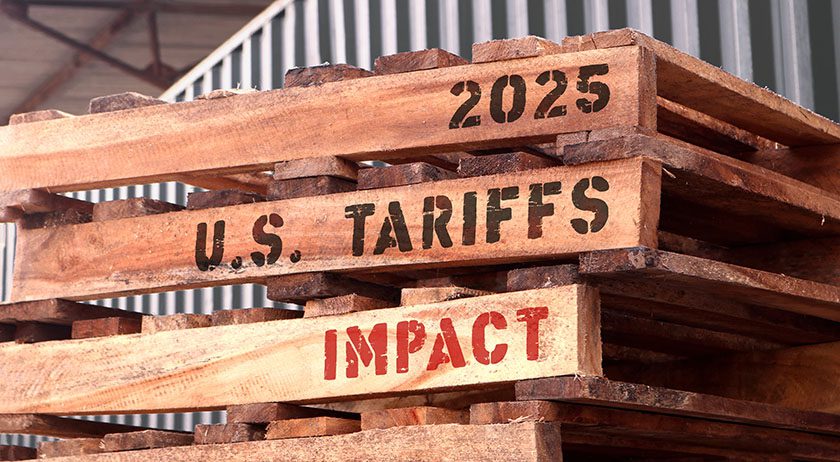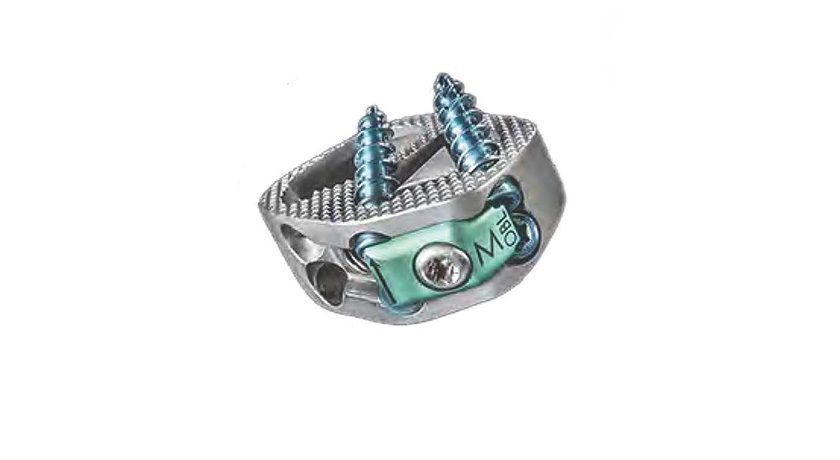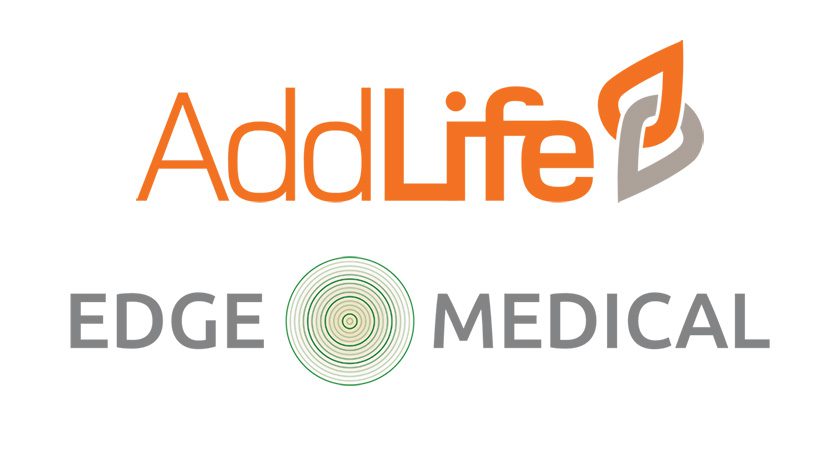

 Copy to clipboard
Copy to clipboard 
Update 4/9: The Trump administration announced a 90-day pause as reciprocal tariffs, which brings the tariff rate down to 10% for most countries. The tariff rate for China was increased to 125% as the two countries continue to escalate retaliation measures.
The federal government announced sweeping changes in recent days that imposed a host of hefty tariffs on U.S. trading partners and led to the firing of thousands of FDA employees. Both initiatives are quickly evolving situations. While it’s difficult to determine the long-term impact the moves will have on the orthopedic industry, the changes have created a frenzied environment that could create complexity and uncertainty for companies in the months ahead.
We expect orthopedic companies to respond to tariff implications as they announce first-quarter earnings in the coming weeks. Orthopedic executives, investors and advisors will also weigh in on the topic at OMTEC 2025 in June. For now, let’s break down what we know and how analysts and trade groups are responding.
Tariff Policy
What Happened? President Donald Trump announced 10% tariffs on most imports into the U.S., along with reciprocal higher tariffs on countries with which the U.S. has large trade deficits. Countries and regions with significant orthopedic revenue or manufacturing are among those hit with the highest tariffs: EU (20%), China (34%), Japan (24%), Switzerland (32%) and Malaysia (24%). The baseline tariffs are in effect, while individual country tariffs are scheduled to start on April 9. According to the President, the goal of the tariffs is to address U.S. trade imbalances and reprioritize U.S. manufacturing.
What Was the Response? Leaders worldwide said they would consider retaliatory tariffs. China, Japan and South Korea announced reciprocal tariffs of higher than 20%. Per news outlets, White House officials said more than 50 countries have already reached out to discuss negotiations. Global markets also responded to the initial announcement with steep drops. The S&P 500 fell 9% in the two days after Mr. Trump’s announcement, the largest weekly decline since March 2020. Top public orthopedic companies saw stock prices fall between 5% and 7% in the same period. Markets are expected to plunge deeper this week, with investors and economists predicting economic fallout from the policy shift.
AdvaMed President and CEO Scott Whitaker said the news was disappointing and tariffs would negatively impact medical technology and innovation in the U.S.
“If implemented as proposed, broad-based tariffs of this nature would act much as an excise tax,” he said. “It will have a negative impact on innovation, cost jobs and increase overall costs to the healthcare system. Historically, industries with a meaningful humanitarian mission have been exempted from broad tariffs, and as a result, we have seen no to low tariffs on medtech from all key trading partners.”
What Does It Mean for Orthopedics? Most analysts said that it’s nearly impossible to quantify the impact that tariffs will have on orthopedic companies.
Mike Matson, Senior Research Analyst at Needham & Company, noted that medtech companies are much less exposed to the tariffs than other industries due to the considerable amount of manufacturing that is done in the U.S. He added that there is still some degree of exposure due to raw materials and components, such as semiconductor chips, being sourced from outside the U.S.
Wells Fargo analysts looked at companies’ annual earnings per share (EPS) as a barometer for the impact. Their analysis of the tariff implications was based on COGS and transfer prices. While the analysts noted that they made a large number of assumptions, their analysis is meant to be directional. CONMED fared the worst of the orthopedic companies they track, with an EPS impact of -9.7%. Medtronic (-2.2%), Zimmer Biomet (-1.9%), Johnson & Johnson (-1.8%) and Stryker (-1.5%) saw much smaller impacts, while Globus Medical’s impact was nearly zero.
We believe the tariffs will have a more significant impact on European companies, like Medacta and Waldemar Link, which manufacture most of their products in their home countries and import them to the U.S.
It’s assumed that all companies are considering mitigation measures, including moving implant production and increasing prices. The orthopedic supply chain has experienced significant disruption since the early days of the pandemic. Just a month ago, device companies and contract manufacturers told us it looked like inventory orders could even out in 2025. It’s possible that optimism is fleeting.
FDA Downsizing
What Happened? The U.S. Department of Health and Human Services (HSS) laid off 10,000 people, including 3,500 at FDA, and announced major restructuring as part of President Trump’s effort to reduce the size of the federal government. According to HSS, the cuts were not aimed at medical device reviewers or inspectors but comprised staff working in human resources, information technology, external affairs and policy functions. Days after the firings, HSS Secretary Robert Kennedy Jr. said that about 20% of the individuals let go will be reinstated.
What Was the Response? Former FDA commissioners were quick to post on social media, lamenting that decades of work to make the U.S. the global leader in medtech and pharmaceuticals had been destroyed.
“The FDA as we’ve known it is finished, with most of the leaders with institutional knowledge and a deep understanding of product development and safety no longer employed,” Robert Califf, M.D., who served as FDA commissioner from 2016 to 2017 and 2022 to 2025, wrote on LinkedIn. “I believe that history will see this [as] a huge mistake.”
He added, “It will be interesting to hear from the new leadership [about] how they plan to put ‘Humpty Dumpty’ back together again.”
Mr. Whitaker of AdvaMed took a more measured tone, saying, “My understanding is that FDA experts whose entire mission is to improve and not stand in the way of patient access to innovative medtech will not be affected. This is good news. Looking forward, our view is that any reduction in force should be accompanied by policy and regulatory improvements that encourage innovation in medtech.”
What Does It Mean for Orthopedics? The Regulatory Affairs Professional Society (RAPS) reported that FDA firings were done hastily and sloppily, depleted morale and gutted administrative staff. Due to internal distractions and short handedness at the agency, submission reviews, inspections and policy updates will likely be slowed down in the short term. FDA issued 514 orthopedic 510(k) clearances in 2024 and 118 in the first quarter of 2025.
It’s too early to predict how FDA’s reduction and staff and restructuring will impact orthopedic companies. More will be known once details emerge about changes at the Center for Devices and Radiological Health, which oversees orthopedic technology. Globally, industry optimism has been mounting for FDA, especially in light of the overcorrection of the European Union’s restrictive Medical Device Regulation.
We estimate that the orthopedic market grew 5% in 2024 to reach $61.9 billion worldwide, due to relatively stable market conditions and robust procedure demand. Now that surgeons have worked through the backlogged procedures that were either canceled or deferred during the pandemic, we believe average market growth will return to the historical baseline of 4%. We’ll know more about whether that growth rate is expected to hold when orthopedics’ largest companies report earnings in the coming weeks.
Update 4/9: The Trump administration announced a 90-day pause as reciprocal tariffs, which brings the tariff rate down to 10% for most countries. The tariff rate for China was increased to 125% as the two countries continue to escalate retaliation measures.
The federal government announced sweeping changes in recent days that imposed a...
Update 4/9: The Trump administration announced a 90-day pause as reciprocal tariffs, which brings the tariff rate down to 10% for most countries. The tariff rate for China was increased to 125% as the two countries continue to escalate retaliation measures.
The federal government announced sweeping changes in recent days that imposed a host of hefty tariffs on U.S. trading partners and led to the firing of thousands of FDA employees. Both initiatives are quickly evolving situations. While it’s difficult to determine the long-term impact the moves will have on the orthopedic industry, the changes have created a frenzied environment that could create complexity and uncertainty for companies in the months ahead.
We expect orthopedic companies to respond to tariff implications as they announce first-quarter earnings in the coming weeks. Orthopedic executives, investors and advisors will also weigh in on the topic at OMTEC 2025 in June. For now, let’s break down what we know and how analysts and trade groups are responding.
Tariff Policy
What Happened? President Donald Trump announced 10% tariffs on most imports into the U.S., along with reciprocal higher tariffs on countries with which the U.S. has large trade deficits. Countries and regions with significant orthopedic revenue or manufacturing are among those hit with the highest tariffs: EU (20%), China (34%), Japan (24%), Switzerland (32%) and Malaysia (24%). The baseline tariffs are in effect, while individual country tariffs are scheduled to start on April 9. According to the President, the goal of the tariffs is to address U.S. trade imbalances and reprioritize U.S. manufacturing.
What Was the Response? Leaders worldwide said they would consider retaliatory tariffs. China, Japan and South Korea announced reciprocal tariffs of higher than 20%. Per news outlets, White House officials said more than 50 countries have already reached out to discuss negotiations. Global markets also responded to the initial announcement with steep drops. The S&P 500 fell 9% in the two days after Mr. Trump’s announcement, the largest weekly decline since March 2020. Top public orthopedic companies saw stock prices fall between 5% and 7% in the same period. Markets are expected to plunge deeper this week, with investors and economists predicting economic fallout from the policy shift.
AdvaMed President and CEO Scott Whitaker said the news was disappointing and tariffs would negatively impact medical technology and innovation in the U.S.
“If implemented as proposed, broad-based tariffs of this nature would act much as an excise tax,” he said. “It will have a negative impact on innovation, cost jobs and increase overall costs to the healthcare system. Historically, industries with a meaningful humanitarian mission have been exempted from broad tariffs, and as a result, we have seen no to low tariffs on medtech from all key trading partners.”
What Does It Mean for Orthopedics? Most analysts said that it’s nearly impossible to quantify the impact that tariffs will have on orthopedic companies.
Mike Matson, Senior Research Analyst at Needham & Company, noted that medtech companies are much less exposed to the tariffs than other industries due to the considerable amount of manufacturing that is done in the U.S. He added that there is still some degree of exposure due to raw materials and components, such as semiconductor chips, being sourced from outside the U.S.
Wells Fargo analysts looked at companies’ annual earnings per share (EPS) as a barometer for the impact. Their analysis of the tariff implications was based on COGS and transfer prices. While the analysts noted that they made a large number of assumptions, their analysis is meant to be directional. CONMED fared the worst of the orthopedic companies they track, with an EPS impact of -9.7%. Medtronic (-2.2%), Zimmer Biomet (-1.9%), Johnson & Johnson (-1.8%) and Stryker (-1.5%) saw much smaller impacts, while Globus Medical’s impact was nearly zero.
We believe the tariffs will have a more significant impact on European companies, like Medacta and Waldemar Link, which manufacture most of their products in their home countries and import them to the U.S.
It’s assumed that all companies are considering mitigation measures, including moving implant production and increasing prices. The orthopedic supply chain has experienced significant disruption since the early days of the pandemic. Just a month ago, device companies and contract manufacturers told us it looked like inventory orders could even out in 2025. It’s possible that optimism is fleeting.
FDA Downsizing
What Happened? The U.S. Department of Health and Human Services (HSS) laid off 10,000 people, including 3,500 at FDA, and announced major restructuring as part of President Trump’s effort to reduce the size of the federal government. According to HSS, the cuts were not aimed at medical device reviewers or inspectors but comprised staff working in human resources, information technology, external affairs and policy functions. Days after the firings, HSS Secretary Robert Kennedy Jr. said that about 20% of the individuals let go will be reinstated.
What Was the Response? Former FDA commissioners were quick to post on social media, lamenting that decades of work to make the U.S. the global leader in medtech and pharmaceuticals had been destroyed.
“The FDA as we’ve known it is finished, with most of the leaders with institutional knowledge and a deep understanding of product development and safety no longer employed,” Robert Califf, M.D., who served as FDA commissioner from 2016 to 2017 and 2022 to 2025, wrote on LinkedIn. “I believe that history will see this [as] a huge mistake.”
He added, “It will be interesting to hear from the new leadership [about] how they plan to put ‘Humpty Dumpty’ back together again.”
Mr. Whitaker of AdvaMed took a more measured tone, saying, “My understanding is that FDA experts whose entire mission is to improve and not stand in the way of patient access to innovative medtech will not be affected. This is good news. Looking forward, our view is that any reduction in force should be accompanied by policy and regulatory improvements that encourage innovation in medtech.”
What Does It Mean for Orthopedics? The Regulatory Affairs Professional Society (RAPS) reported that FDA firings were done hastily and sloppily, depleted morale and gutted administrative staff. Due to internal distractions and short handedness at the agency, submission reviews, inspections and policy updates will likely be slowed down in the short term. FDA issued 514 orthopedic 510(k) clearances in 2024 and 118 in the first quarter of 2025.
It’s too early to predict how FDA’s reduction and staff and restructuring will impact orthopedic companies. More will be known once details emerge about changes at the Center for Devices and Radiological Health, which oversees orthopedic technology. Globally, industry optimism has been mounting for FDA, especially in light of the overcorrection of the European Union’s restrictive Medical Device Regulation.
We estimate that the orthopedic market grew 5% in 2024 to reach $61.9 billion worldwide, due to relatively stable market conditions and robust procedure demand. Now that surgeons have worked through the backlogged procedures that were either canceled or deferred during the pandemic, we believe average market growth will return to the historical baseline of 4%. We’ll know more about whether that growth rate is expected to hold when orthopedics’ largest companies report earnings in the coming weeks.

You are out of free articles for this month
Subscribe as a Guest for $0 and unlock a total of 5 articles per month.
You are out of five articles for this month
Subscribe as an Executive Member for access to unlimited articles, THE ORTHOPAEDIC INDUSTRY ANNUAL REPORT and more.
CL
Carolyn LaWell is ORTHOWORLD's Chief Content Officer. She joined ORTHOWORLD in 2012 to oversee its editorial and industry education. She previously served in editor roles at B2B magazines and newspapers.







